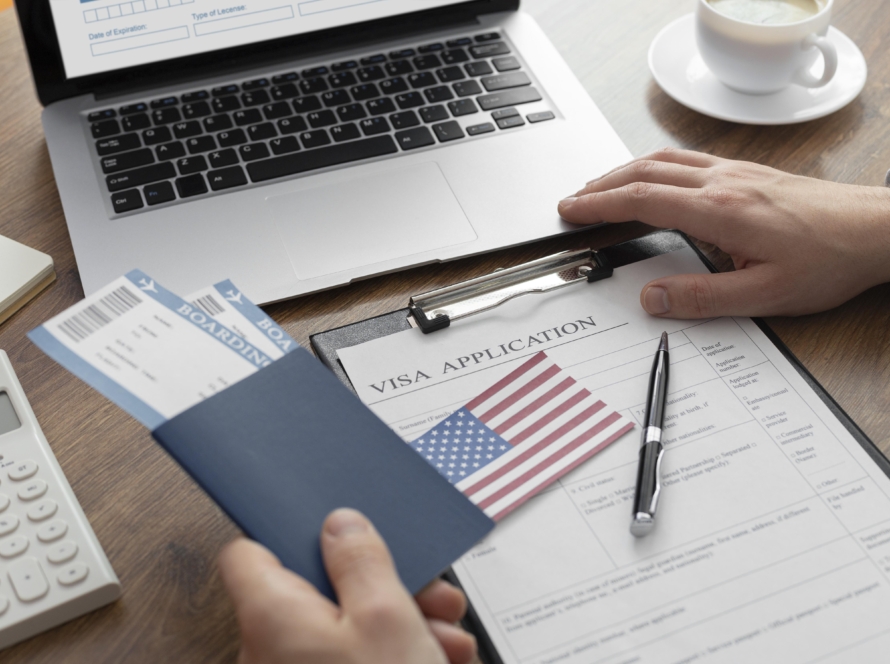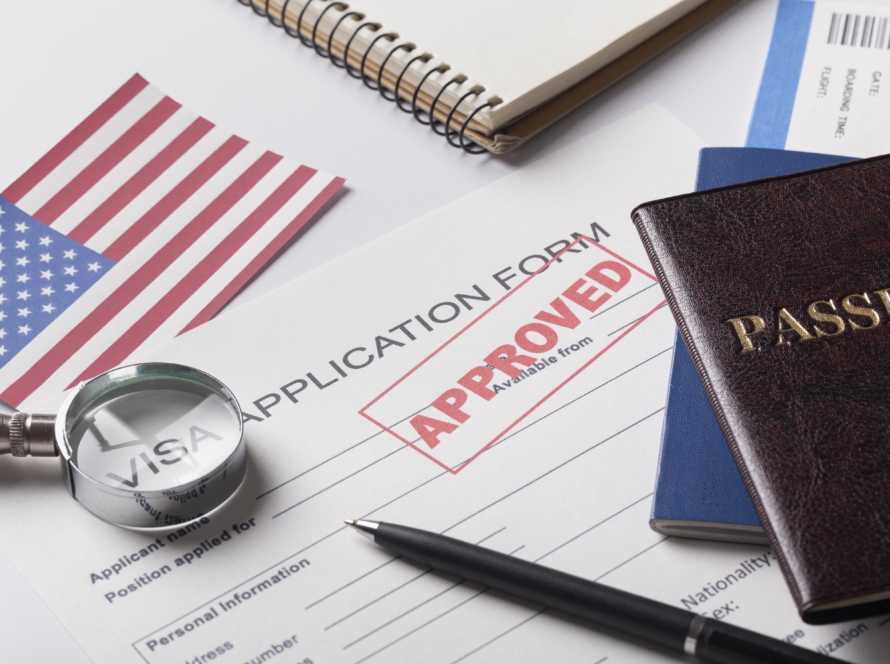Introduction:
Family reunification is a core principle of U.S. immigration policy, and the family immigration process provides a pathway for U.S. citizens and lawful permanent residents to bring their close relatives to live with them in the United States.
If you are a U.S. citizen or green card holder and wish to bring your family to the U.S., there are specific visa options and procedures available depending on the type of relationship you have with the relatives you wish to sponsor.
The process can be complex, but understanding the requirements and timelines is crucial to navigating it successfully.
Whether you’re bringing your spouse, children, parents, or siblings, there are distinct visa categories designed to accommodate various family situations.
In this guide, we will explore the different family immigration visa options, the application process, and the steps you need to take to reunite with your loved ones in the U.S.
Types of Family Immigration Visas
Family immigration visas are divided into immediate relative and preference categories, based on your relationship with the person you wish to sponsor and their immigration status. Here’s an overview of the main visa options available for family-based immigration:
1. Immediate Relative Immigrant Visas:
These visas are for close family members of U.S. citizens and are not subject to annual numerical limits, meaning there are no waitlists for these categories. Immediate relatives include:
- Spouses of U.S. citizens
- Unmarried children under 21 of U.S. citizens
- Parents of U.S. citizens (if the U.S. citizen is over 21 years old)
The process for bringing immediate relatives to the U.S. is typically faster compared to preference categories because there are no visa quotas.
2. Family Preference Immigrant Visas:
Family preference visas are subject to annual limits on the number of visas issued. These categories are for more distant relatives, and the waiting times can be long due to the limited number of visas available each year. The family preference categories are:
- F1: Unmarried sons and daughters (21 or older) of U.S. citizens
- F2A: Spouses and children (under 21) of lawful permanent residents (green card holders)
- F2B: Unmarried sons and daughters (21 or older) of lawful permanent residents
- F3: Married sons and daughters of U.S. citizens
- F4: Siblings of U.S. citizens (if the U.S. citizen is over 21)
While the process can take several years, it’s still possible to bring family members from abroad once they are selected for a visa.
Steps to Bring Your Family to the U.S.
The process of bringing a family member to the U.S. through family immigration involves several steps. These steps will differ depending on whether the family member is already in the U.S. or abroad. Below is a general breakdown of the process:
1. Determine the Visa Category:
The first step is determining which visa category applies to your situation. As mentioned earlier, this depends on your relationship with the family member you wish to sponsor and whether you are a U.S. citizen or a permanent resident. U.S. citizens generally have more flexibility in terms of the categories they can sponsor.
2. File Form I-130 (Petition for Alien Relative):
The next step is to file Form I-130, also known as the Petition for Alien Relative, with U.S. Citizenship and Immigration Services (USCIS). This form establishes your relationship with the relative you wish to sponsor and is the first step in the family immigration process.
Along with Form I-130, you will need to submit supporting documents, such as:
- Proof of your U.S. citizenship or permanent resident status (e.g., a copy of your U.S. passport or green card).
- Evidence of your relationship with the family member (e.g., a marriage certificate for a spouse or a birth certificate for a child).
- Passport-style photos for both the petitioner (you) and the beneficiary (the family member you are sponsoring).
Once the I-130 petition is submitted, USCIS will review the petition and approve or deny it. Approval times vary, but it typically takes about 6-12 months.
3. Wait for Visa Availability (If Applicable):
If you are sponsoring a family member under the preference categories, you will need to wait for a visa to become available. This wait can take several years, depending on the preference category and the country of origin of the family member. You can track visa availability using the U.S. Department of State’s Visa Bulletin.
Immediate relatives (spouses, unmarried children under 21, and parents of U.S. citizens) do not have to wait for a visa to become available since there is no numerical cap on their visas.
4. Apply for an Immigrant Visa or Adjustment of Status:
Once the I-130 petition is approved, and a visa is available (or immediately, in the case of immediate relatives), the next step is to apply for the actual immigrant visa if the family member is abroad or adjust their status if they are already in the U.S.
- If the family member is abroad: They will need to attend an immigrant visa interview at the U.S. embassy or consulate in their home country. Once the visa is approved, they will be issued a U.S. immigrant visa and can travel to the U.S.
- If the family member is in the U.S.: They can apply to adjust status to a lawful permanent resident (green card holder) by filing Form I-485. This process allows them to remain in the U.S. while their green card application is processed.
5. Attend the Interview (If Applicable):
For individuals applying from outside the U.S., they will need to attend an immigrant visa interview at the U.S. embassy or consulate. This interview is where consular officers will verify the information in the application and ensure that the family member is eligible for a visa. Commonly required documents for the interview include:
- The I-130 approval notice
- A valid passport
- Civil documents (birth certificate, marriage certificate, police certificates, etc.)
- Proof of financial support (Form I-864, Affidavit of Support)
- Medical examination results from an approved physician
6. Wait for the Visa Approval and Entry into the U.S.:
If the interview is successful and the visa is approved, the family member will receive their immigrant visa and can travel to the U.S. Upon entry, they will be processed as a permanent resident and receive their green card in the mail within a few weeks.
7. Green Card and U.S. Citizenship:
Once your family member becomes a lawful permanent resident, they can live, work, and study in the U.S. After three years of permanent residency, they may be eligible to apply for U.S. citizenship, provided they meet all other eligibility requirements.
Key Considerations and Challenges
While the family immigration process is an essential and rewarding pathway for family reunification, there are several key considerations and challenges to keep in mind:
- Wait Times and Visa Backlogs: For individuals in family preference categories, the wait times for visa availability can be long. Depending on the category and the country of origin, the wait for a family-based green card can range from several months to decades.
- Financial Sponsorship Requirements: As a sponsor, you must prove that you can financially support your family member once they arrive in the U.S. This is done through Form I-864, Affidavit of Support, which ensures that your family member will not become a public charge. You will need to meet certain income requirements based on the Federal Poverty Guidelines.
- Immigration Violations: If your family member has violated U.S. immigration laws in the past, such as overstaying a visa, it may complicate the immigration process. In some cases, waivers or exceptions may be available, but it is important to consult an immigration lawyer to understand your options.
Conclusion
Bringing your family to the U.S. through family immigration is an important process that allows U.S. citizens and lawful permanent residents to reunite with loved ones. The process can be straightforward for immediate relatives, but those in the family preference categories may face longer waiting periods due to visa quotas.
By understanding the various visa categories, filing the right forms, and providing the necessary evidence, you can successfully navigate the family immigration process and bring your loved ones to the U.S.
The emotional rewards of family reunification are significant, and with patience and proper planning, your family can enjoy a new life together in the United States.
FAQs
- What is the difference between an immediate relative and a family preference visa?
Immediate relative visas are for close family members of U.S. citizens and are not subject to numerical limits, whereas family preference visas have annual limits and longer wait times. - How long does it take to bring my family member to the U.S.?
Processing times vary based on the visa category and the applicant’s country of origin. Immediate relatives typically have faster processing, while preference categories can have waiting times of several years. - Do I need to provide financial support for my family members?
Yes, you must file Form I-864, Affidavit of Support, and meet the required income levels to prove you can financially support your family member once they arrive in the U.S. - Can I bring my sibling to the U.S.?
Yes, U.S. citizens can sponsor their siblings under the F4 preference category, but the wait times can be quite long (often 10 years or more, depending on the country). - What happens after my family member arrives in the U.S.?
After their visa is approved and they enter the U.S., they will become a permanent resident and receive their green card. They can then live and work in the U.S., and eventually apply for U.S. citizenship if eligible.


